Asia-Pacific Archive
Free Newsletter
Some 3,000 U.S. and Filipino marines have begun two weeks of joint training drills, including a hostile beach-assault exercise near the Spratly Islands — a patchwork of islets and atolls at the center of maritime territorial disputes in the South China Sea. While U.S. military officials assert the drills are not aimed at China or any other country as a specific target, Marvin Ott, an Asia expert at the Woodrow Wilson International Center for Scholars, says they represent an obvious strategic move by Washington to counter growing Chinese efforts to claim sovereignty and exert dominance over the South China Sea. […]
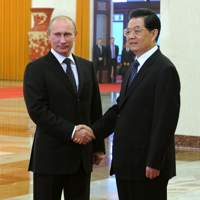
A new report from the Stockholm International Peace Research Institute has shed light on one of most important developments in the international arms trade market of the past 10 years: the decline in Russian arms sales to China. While diplomatic relations between the two powers remain relatively strong, their trade in arms has collapsed since the middle of the last decade. The cause of this collapse stems not from any substantial political conflict between the two, but rather from “ordinary” tensions that afflict great power relations. While the greatest immediate impact of this development will be felt by Russia and […]
Mexico’s economy minister sent China a formal letter last month expressing concern over unfair trade practices used by certain Chinese firms to avoid customs duties. In an email interview, Rhys Jenkins, a specialist in China’s trade relations with Latin America at the University of East Anglia, discussed the trade relationship between China and Mexico. WPR: What is the history of China-Mexico trade ties? Rhys Jenkins: Trade between Mexico and China has grown spectacularly over the past decade from a little more than $3 billion in 2000 to almost $50 billion in 2010. The trade balance, however, has been massively in […]

China-Russia relations took another step forward during Prime Minister Vladimir Putin’s visit to Beijing last week. With the Arab Spring throwing the two governments into an unexpected alliance at the United Nations this year, the visit marked the continuation of attempts to build a deeper and less volatile bilateral relationship. The two sides signed off on trade deals worth $7 billion, demonstrating a tangible effort to move beyond energy-based economic ties, while Putin suggested a greater focus on China for the Kremlin’s foreign policy after the recent period of rapprochement with the U.S. This suggests that, although mistrust and suspicion […]
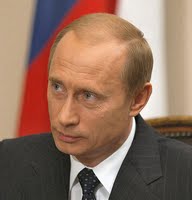
The reaction in much of the Western press to Russian Prime Minister Vladimir Putin’s proposal of a Eurasian Union at the beginning of October was more or less predictable to longtime Russia watchers. Familiar accusations of Russian neo-imperialism and wild claims about a “new Soviet Union” abounded, feeding into a general narrative of Russia as a looming threat that must be contained. These fears are premature, to say the least. As Richard Weitz pointed out in his WPR column last week, the idea of some form of overarching supranational organization for the post-Soviet states has been a hallmark of Russian […]
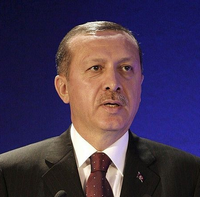
Last week, on a study trip to Turkey for U.S. foreign policy specialists sponsored by the Confederation of Businessmen and Industrialists of Turkey (TUSKON), I traveled to Ankara, Hatay and Istanbul to meet with government officials, academic and think tank experts and business leaders. While there, we discussed many issues, including the remarkable health of the Turkish economy, the domestic political scene, the increased tolerance for expressions of Kurdish and Islamist identities, and Turkey’s relations with other countries. But perhaps the overarching theme tying all these issues together for us was the “Whither Turkey” question. For decades the Republic of […]
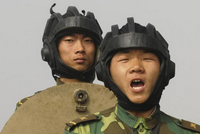
There exists within the Pentagon an unshakeable line of reasoning that says the Chinese military threat to the United States in Asia is profound and growing, that the most likely great-power war conflict will be over Taiwan or the South China Sea, and that the primary trigger will be China’s burgeoning — and uncontrollable — nationalism. Objectively, China’s military capabilities are certainly growing dramatically, but our conventional wisdom tends to break down in the structural plausibility of the scenarios. That’s why the firm belief that rampant nationalism will trigger an eventual conflict becomes so crucial, especially when considered in combination […]

Thirty years of globalization has propelled widespread economic growth across Southeast Asia. In recent decades, the number of people in the region living on less than $1.25 a day has dropped by half. Yet, these positive development trends are accompanied by a darker side of globalization: trafficking in drugs and small arms, piracy, human smuggling, the marketing of counterfeit goods and nuclear proliferation. The size and scope of these challenges threaten to undercut the remarkable gains of the past quarter-century. Preserving those gains will require collaboration between Southeast Asian governments, the identification of novel streams of security and development assistance […]
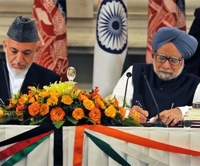
In a move that signals India’s resolve to stay the course in Afghanistan after NATO troops withdraw in 2014, Indian Prime Minister Manmohan Singh signed a Strategic Partnership Agreement (SPA) with visiting Afghan President Hamid Karzai in New Delhi last week. The SPA includes a major security component, with India “agreeing to assist, as mutually determined, in the training, equipping and capacity-building programs for Afghan National Security Forces.” That this was the first security pact of any kind signed by India on the subcontinent was not lost on Islamabad, with former Pakistani President Pervez Musharraf immediately dubbing the pact “anti-Pakistan.” […]
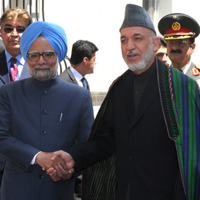
The strategic partnership agreement signed by Afghan President Hamid Karzai and Indian Prime Minister Manmohan Singh in New Delhi last week made front-page news across the region and beyond. The attention it attracted is hardly surprising: The agreement, the first of its kind for Afghanistan, includes the provision of training for Afghanistan’s military and police, the establishment of social and cultural exchanges, and measures to enhance economic ties. It also comes in the context of increasing tensions between Afghanistan and Pakistan. A day prior to the announcement, Karzai harshly criticized Islamabad for not supporting ongoing peace and stability operations in […]
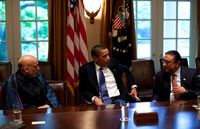
With a variety of major political and military events unfolding across Asia and the Middle East, many countries are re-examining longstanding formal and informal partnerships and alliances. As a result, the coming months and years will bring about a recasting of important strategic links, some of which have been part of the global landscape for decades. The combined effect of America’s war in Afghanistan, its fight against Muslim extremists inside Pakistan and the ongoing Arab uprisings are prompting a fundamental rethinking of some of the bilateral and multilateral ties that have served as the bedrock of international affairs in recent […]

Is the world about to see a “drone race” among the United States, China and several other major powers? Writing in the New York Times, Scott Shane argued that just such an arms race is already happening and that it is largely a result of the widespread use of drones in a counterterror role by the United States. Shane suggests that an international norm of drone usage is developing around how the United States has decided to employ drones. In the future, we may expect that China, Russia and India will employ advanced drone technologies against similar enemies, perhaps in […]
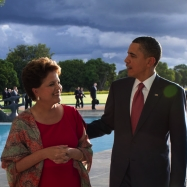
Recent developments in South America have upended the United States’ historical — and often misguided — tendency to lump the region into a one-size-fits-all policy. A politically and economically muscular Brazil, the rise of an anti-American bloc of countries led by Venezuela, and the emergence of economic and even political extraregional rivals in the hemisphere have created a more diverse, independent and contentious region for the United States. At the same time, the looming shadow of a double-dip U.S. recession and the spectacle of partisan intransigence leaving Washington paralyzed have led to an overwhelming impression across the region that the […]

Russian Prime Minister Vladimir Putin followed up his unsurprising Sept. 24 declaration that he would again seek the presidency with a more surprising call: to create what he called a “Eurasian Union.” In a rare and lengthy newspaper piece published on Oct. 4, Putin announced his desire for Russia to again lead a multinational bloc of tightly bound, former Soviet republics. But major obstacles stand in the way of Putin’s project, and the prospects of a new Eurasian Union emerging anytime soon in the former Soviet space are small. Putin’s press secretary, Dmitry Peskov, told the influential Kommersant newspaper that […]
